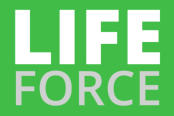

The magazine of the photo-essay

August 2019 back issue

“A free, really high quality photo-essay magazine. Fabulous!”
Stephen Fry. British actor, writer and film maker
Damian Bird
To commission him or to request prints of his work: damianbirdphotography.com
Damian Bird (born London, 1972) is a photographer, photojournalist and lecturer
with many years of experience, working in war zones and trouble spots around the
globe.
He was educated in Photography at the Surrey College of Art and Design and at the
London College of Communication where he studied for a post graduate degree in
Photojournalism.
In 2011 he founded Life Force magazine with his business partner and wife of 18
years, Alice. As well as Editing Life Force magazine, he is currently engaged in
photographing a series of photo-essays on English culture and has recently returned
to Afghanistan. His first book Seabird was released in November 2017 his latest book is
due to be release at the end of 2019.



Saul Leiter
Saul Leiter (December 3, 1923 – November 26, 2013) was an American
photographer and painter whose early work in the 1940s and 1950s was an
important contribution to what came to be recognized as the New York school of
photography. Wikipedia






He continues to have his work published in national and international newspapers and magazines including The Times,
the Telegraph, the Express, the Observer, GQ, Esquire, Daily Mail, Dazed & Confused, The Face, Country Life, Coast and
Geographical magazine. He lives in Devon, England with his wife, four children and
his dachshunds, Jessie, Rosie and Ted.
Beat Schweizer
To commission him or to request prints of his work: www.beatschweizer.com
I work for editorial and corporate clients and pursue personal projects with a documentary approach. Based in Bern,
Switzerland.







Tito Mouraz
To commission him or to request prints of his work: www.titomouraz.com
Tito Mouraz, 1977, Portugal.
He finished the Visual Arts and Photography course in the Superior Art School of
Oporto (Escola Superior Artística do Porto) in 2010, being this the city where he lives
and works currently. Exhibits regularly since 2009 in Portugal and abroad. Some of
the most significant exhibitions have taken place at Módulo Gallery (Lisbon); The
Finnish Museum of Photography (Helsinki); Format International Photography
Festival (UK); Blanca Berlin Gallery (Spain); Tampere Art Museum (Finland); Museu
da Imagem (Portugal); Fotofestiwal Lodz (Poland); Festival Circulation(s), Paris
(France); Carpe Diem Arte e Pesquisa (Lisbon) Encontros da Imagem, Braga
(Portugal); Voies Off Gallery, Arles (France) etc.






Catherine Karnow
To commission her or to request prints of her work: website
Born and raised in Hong Kong, the daughter of an American journalist, San
Francisco-based National Geographic photographer Catherine Karnow seems
destined to have travel and photojournalism at the center of her life. She graduated
Brown University with honors degrees in Comparative Literature and Semiotics.
Catherine has covered Australian Aborigines; Bombay film stars; Greenwich,
Connecticut high society; and an Albanian farm family. In 1994, she was the only
non-Vietnamese photo-journalist to accompany General Giap on his historic first
return to the forest encampment in the northern Vietnam highlands from which he
plotted the battle of Dien Bien Phu. She also gained unprecedented access to Prince
Joshua Dudley Greer
To commission him or to request prints of his work: www.jdudleygreer.com
Joshua Dudley Greer is a photographer based in Atlanta, GA where he teaches photography at Georgia State University.
His work has appeared in The California Sunday Magazine, Le Monde, The Georgia Review and Oxford American and is in
the permanent collections of the Ogden Museum of Southern Art, the New York Public Library, the Do Good Fund and the
High Museum of Art.
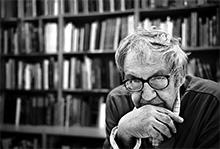
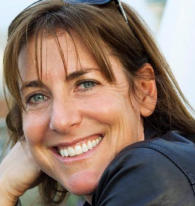
Charles for her 2006 National Geographic feature, "Not Your Typical Radical."
Her work has appeared in National Geographic, National Geographic Traveler, Smithsonian, French & German GEO and
many other international publications. Catherine's passion for photography carries into her love for teaching. She is a
highly experienced teacher and has been leading her own workshops for almost a decade. She has taught the National
Geographic Weekend Workshops in San Francisco, and also gives private workshops and teaching seminars all over the
world, for a myriad of private, corporate and editorial clients. Unparalleled are her Signature Photo Workshops in Umbria
in May, Vietnam-Cambodia in October, South India in February, and coming up: France in September. Catherine's photo
workshops are not tours, but actual workshops where guests are immersed in the real learning of photography, and in
particular how to photograph people.
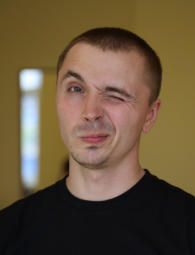
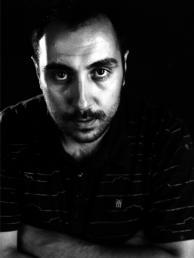
Winner in 2013 of The Emergentes DST International Photography Award and the Portfolio Review Award, Carpe Diem
Arte e Pesquisa.
In Portugal he is represented by Módulo - Centro Difusor de Arte, Lisbon.
His work is present in the BES Art public collection and in some private collections.
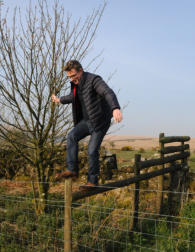
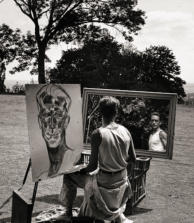
Jacques Henri Lartigue
www.lartigue.org
Jacques Henri Lartigue was unknown as a photographer until 1963, when, at 69
years old, his work was shown for the first time in a solo exhibition at the Museum of
Modern Art, New York. That same year, a picture spread published in Life magazine
in an issue on John Fitzgerald Kennedy’s death also introduced Lartigue’s work to a
wide public. Much to his surprise, he rapidly became one of the twentieth century’s
most famous photographers.
Jacques Lartigue was introduced to photography as early as the year 1900 by his
father, Henri Lartigue, who gave him his first camera in 1902, when Jacques was
eight years old. From then on, Jacques recorded incessantly the world of his
childhood, from automobile outings and family holidays to inventions by his older
brother Maurice (nicknamed Zissou). Born into a prosperous family, the two brothers were fascinated by cars, aviation and
sports currently in vogue; Jacques used his camera to document them all. As he grew up, he continued to frequent sporting
events, participating in and recording such elite leisure activities as skiing, skating, tennis or golf.
But young Jacques, acutely aware of the evanescence of life, worried that photographs were not enough to resist the
passing of time. How could images taken in just a few seconds convey and retain all the beauty and wonder around him?
In parallel to his photography, he therefore began keeping a diary, and continued to do so throughout his life.
He also took up drawing and painting in 1915. After briefly attending the Julian Academy in Paris, he became a
professional painter, exhibiting his work from 1922 on in Paris and the south of France. In 1919, Jacques married
Madeleine Messager, the daughter of composer André Messager; their son Dany was born in 1921.
Jacques and Madeleine divorced in 1931.
Jacques circulated in high society until the early 1930s, when the decline of the Lartigue fortune forced him to look for other
sources of income. But he refused to give up his freedom by taking on a steady job, and lived meagerly off his painting
throughout the 1930s and 1940s. In the early 1950s, while pursuing his painting career, he also began to receive some
recognition as a photographer.
In 1962, with Florette, his third wife, he sailed by cargo ship to Los Angeles. During their travels, they stopped in New York,
where they met with Charles Rado, founder of the photo agency Rapho. After seeing Lartigue’s photographs, Rado
introduced him to John Szarkowski, the newly appointed director of the photography department at the Museum of
Modern Art. Szarkowski was so impressed that the following year, he organized the first-ever exhibition of Lartigue’s work.
A retrospective of Lartigue’s photographs was held in Paris’ decorative arts museum, the Musée des Arts Décoratifs, in
1975—the year after the French president, Valéry Giscard d’Estaing, asked him to take his official portrait. In 1979,
Lartigue signed an act donating his entire photographic output to the French government, the first living French photographer
to do so; and mandated the Association des Amis de Jacques Henri Lartigue to conserve and promote his work. In 1980, his
exhibition “Bonjour Monsieur Lartigue” was shown at the Grand Palais in Paris. He continued taking photographs, painting
and writing until his death in Nice on September 12, 1986, at the age of 92, and left behind more than 100,000 photographs,
7,000 diary pages and 1,500 paintings



